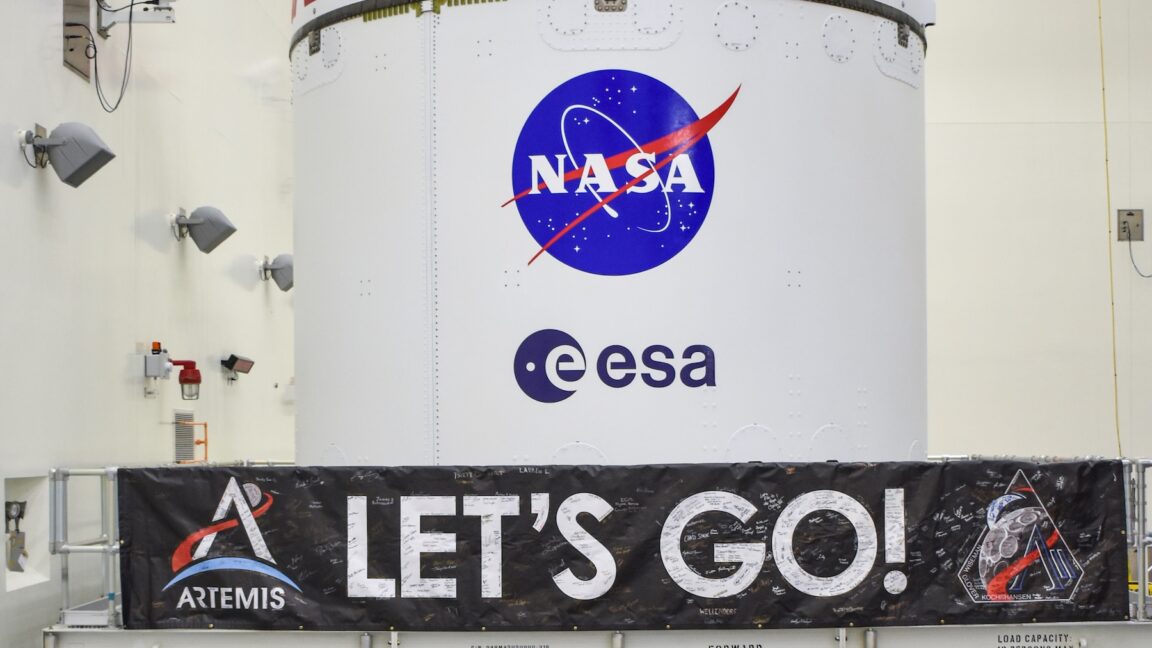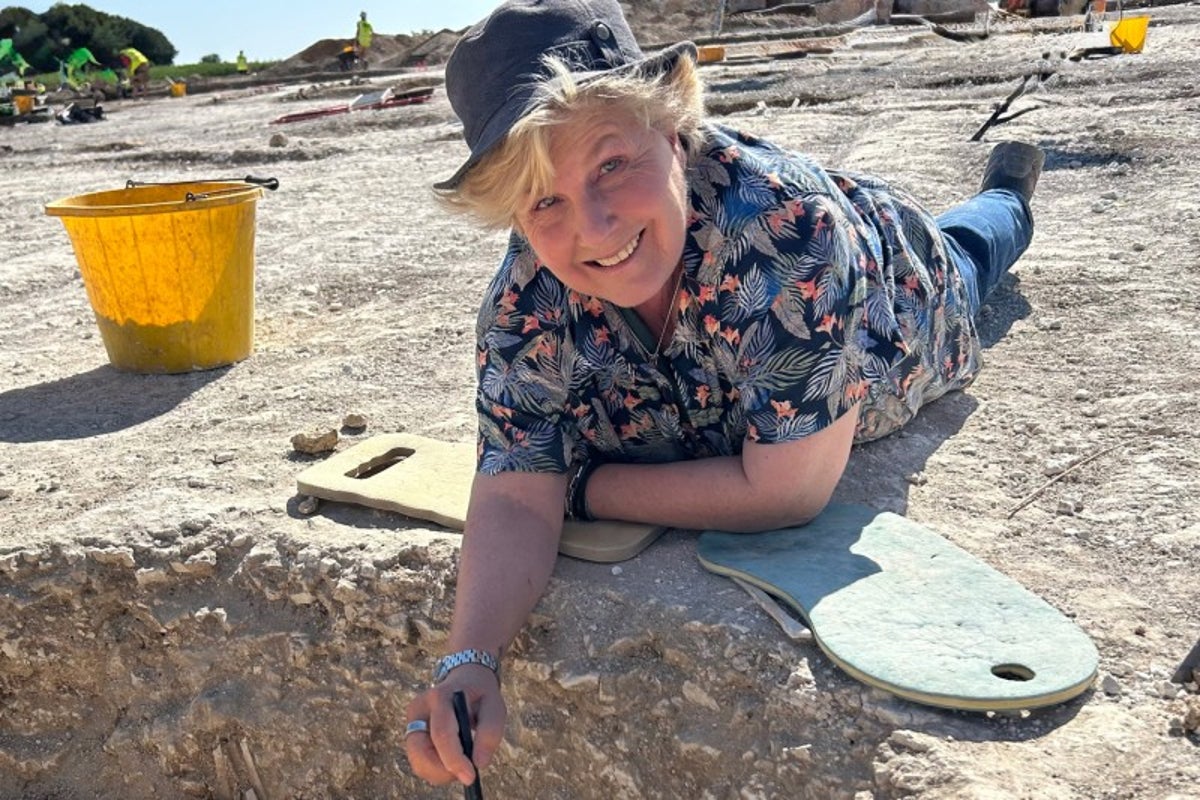NASA’s Artemis II Mission Faces Crisis as Workers Go Unpaid Amid Government Shutdown, Igniting Outrage Over Essential Labor Exploitation and Political Apathy in America’s Space Race
The ongoing government shutdown has cast a shadow over NASA’s operations, particularly affecting the Artemis II mission, which aims to return humans to the Moon. As the political stalemate in Washington continues, federal civil servants and contractors at NASA are facing a grim reality: they are required to work without pay. This situation raises serious ethical questions about the treatment of essential workers and the implications of political decisions on critical national projects.
Since the shutdown began nearly a month ago, many employees at NASA’s Kennedy Space Center in Florida have remained on the job, focused on ensuring that the Artemis II mission stays on schedule for its planned launch in February. Despite the lack of compensation, these workers have achieved significant milestones, including the recent stacking of the Orion spacecraft atop the Space Launch System (SLS) rocket. This achievement is a testament to their dedication and professionalism, but it also highlights the troubling dynamics of labor in the face of governmental dysfunction.
The Artemis program, which aims to land “the first woman and the next man” on the Moon by 2024, is a cornerstone of NASA’s efforts to establish a sustainable human presence on the lunar surface and prepare for future missions to Mars. The Artemis II mission is particularly critical as it will be the first crewed flight of the Orion spacecraft, marking a significant step in human space exploration. However, the current government shutdown threatens to derail these ambitious plans, as the financial strain on workers could lead to decreased morale and productivity.
The essential nature of the work being done at NASA cannot be overstated. Employees are tasked with operating and safeguarding the International Space Station, managing robotic probes exploring the Solar System, and now, preparing for Artemis II. These roles are vital not only for the success of NASA’s missions but also for maintaining the United States’ leadership in space exploration. Yet, the fact that these workers are not receiving pay raises questions about the value placed on their contributions.
The situation is reminiscent of historical labor disputes where workers were deemed essential yet faced exploitation. The current crisis echoes themes from the labor movements of the past, where workers fought for fair compensation and recognition of their contributions. The juxtaposition of essential labor and unpaid work in the context of a government shutdown is a stark reminder of the ongoing struggle for workers’ rights in America.
As the shutdown continues, the potential for long-term repercussions grows. The Artemis II mission is not just a technical endeavor; it represents a national commitment to exploration and innovation. The inability to compensate workers adequately could lead to a talent drain, as skilled professionals may seek opportunities elsewhere, jeopardizing the future of NASA and its missions. Furthermore, the psychological impact on employees forced to work without pay can lead to burnout and decreased job satisfaction, ultimately affecting the quality of work produced.
The political implications of this shutdown extend beyond NASA. It reflects a broader trend of governmental dysfunction that has become increasingly common in recent years. The inability of lawmakers to reach a budget agreement demonstrates a failure to prioritize essential services and the well-being of those who contribute to them. This situation raises critical questions about accountability and the responsibilities of elected officials to their constituents, particularly those working in vital sectors like space exploration.
In the context of the Artemis program, the stakes are high. The mission is not only about reaching the Moon but also about inspiring future generations to pursue careers in science, technology, engineering, and mathematics (STEM). The current crisis threatens to undermine this vision, as the narrative of exploration and innovation is overshadowed by political gridlock and labor exploitation.
As the clock ticks down to the planned launch of Artemis II, the urgency of the situation cannot be ignored. The dedication of NASA employees is commendable, but it should not come at the cost of their financial stability and well-being. The government must find a resolution to the shutdown that recognizes the essential nature of their work and ensures that they are compensated fairly for their contributions.
The Artemis II mission stands at a crossroads, with the potential to either propel humanity forward in its quest for knowledge and exploration or to become a cautionary tale of how political failures can hinder progress. The outcome of this situation will not only impact the future of NASA but also serve as a reflection of society’s values regarding labor, compensation, and the pursuit of ambitious goals in the face of adversity.
It has been nearly one month since many parts of the federal government shut down after lawmakers missed a budget deadline at the end of September, but so far, NASA’s most critical operations have been unaffected by the political impasse in Washington, DC.
That may change soon. Federal civil servants and NASA contractors are not getting paid during the shutdown, even if agency leaders have deemed their tasks essential and directed them to continue working. Jobs classified as essential include employees operating and safeguarding the International Space Station and NASA’s fleet of robotic probes exploring the Solar System and beyond.
Many employees at NASA’s Kennedy Space Center in Florida remain at work, too. Their job is to keep the Artemis II mission on schedule for launch as soon as next February. In the four weeks since the start of the government shutdown, crews at Kennedy Space Center have completed several major milestones on the road to Artemis II, including the stacking of the Orion spacecraft atop its Space Launch System rocket inside the cavernous Vehicle Assembly Building. This milestone, completed about one week ago, capped off assembly of the SLS rocket for Artemis II.




